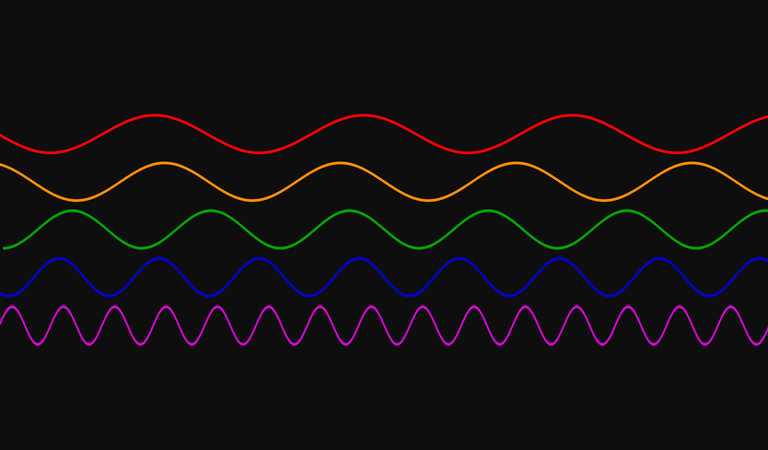I made some slow-mo videos to SEE sound! - Polyrhythmic Pitch Ratios
Quite some time ago now here on Hive, I wrote a series of blogs about the history of musical development. I also touched on the physics of sound among other things.
In that series, I made a fascinating little home experiment with my guitar and the slow-mo camera on my phone demonstrating just how 'pitch' works with the strings. By detuning a couple of strings to bass guitar-levels of low pitch, it became easy for my phone to capture the wave pattern when plucking the strings.
Without repeating the blog (I do plan to re-polish a lot of my blogs into something more pro-level but that's not today), I essentially demonstrated pitch ratios between notes in any given interval. For example, An octave (From DO to Do, C4 to C5) has an interval ratio of 2:1 - One string does two full cycles (up-down-up-down) in the same time the other string does just one (up-down). This rate of oscillation is literally how the pitch of sound is created as it pushes and pulls the air around it and launches it towards our ears.

Source - Top is lower frequency, bottom is higher)
Although my current phone is already pretty old - over 4 years, I think - the slow-mo is a lot better than the one I originally used for this experiment. So today I made some updated versios of this concept and it turned out pretty well.
Here's the original idea remade, a simple 2:1 ratio creating a simple Octave. The top is the kick drum, the bottom is the snare:
I went a little further and decided to go for a 5th (Do to So, C to G - think 'star wars theme' opening two notes). This has an interval ratio of 3:2, 3 vibrations of one string over the same duration of 2 cycles on the other. The top is the snare, the bottom is the kick drum:
Finally, I went all out with a Major 7th interval (Do to Ti, C to B, think 'Take on me, first two words of the chorus). This one is quite dissonant. The more dissonant an interval is, the more complex that ratio becomes, and it can sound quite grating to our ears when we hear it. In the case of a Major 7th, the ratio is 8:15. This is almost a 2:1 octave which would be equivalent to 8:16, but not quite, so it pulls at our ears. Since the polyrhythm here was quite rapid, I had to slow it down as slow as I possibly could in order to count it nice and clearly, and it turns out pretty great. The left is the kick drum, the right is the snare:
Pretty neat how that just matches up like a dream after 15 hits, repeating hundreds of times to make just a few seconds of sound.
How To
Making these were pretty simple once you know how:
- Detuning the strings.
This part is only necessary on guitar. You can do the same with the low end of a piano or a bass guitar since the string length is significantly longer, thus the tension remains. If you try this with thinner or shorter strings, you end up getting overly floppy strings that are impossible to control the pitch to anything consistent, assuming you could even hear it. In my case, I tuned the E string to a low, low E. The next string was tuned accordingly: E an octave up, B for the 5th (E F# G# A B) and D# for the major 7th (E F# G# A B C# D#).
- Slow it down
Exactly that. I used the slowest slow-mo on my phone, then plonked it into an editor and slowed it down again until it became easy to comprehend. I might try this again with my girlfriends iPhone and see how the quality compares.
- Metronome
I put the videos into an editor and pressed play - no sound needed. With my handy polyrhythm metronome app I happen to have on my phone because I like to secretly learn polyrhythms during meetings and other boring occasions, I watch one of the strings and tap the tempo on the tap button at the bottom. This is a real easy way to get them lined up pretty much perfectly.
- Combine & release
Throw it all in a bowl, mix it and serve!
Thanks for your contribution to the STEMsocial community. Feel free to join us on discord to get to know the rest of us!
Please consider delegating to the @stemsocial account (85% of the curation rewards are returned).
You may also include @stemsocial as a beneficiary of the rewards of this post to get a stronger support.